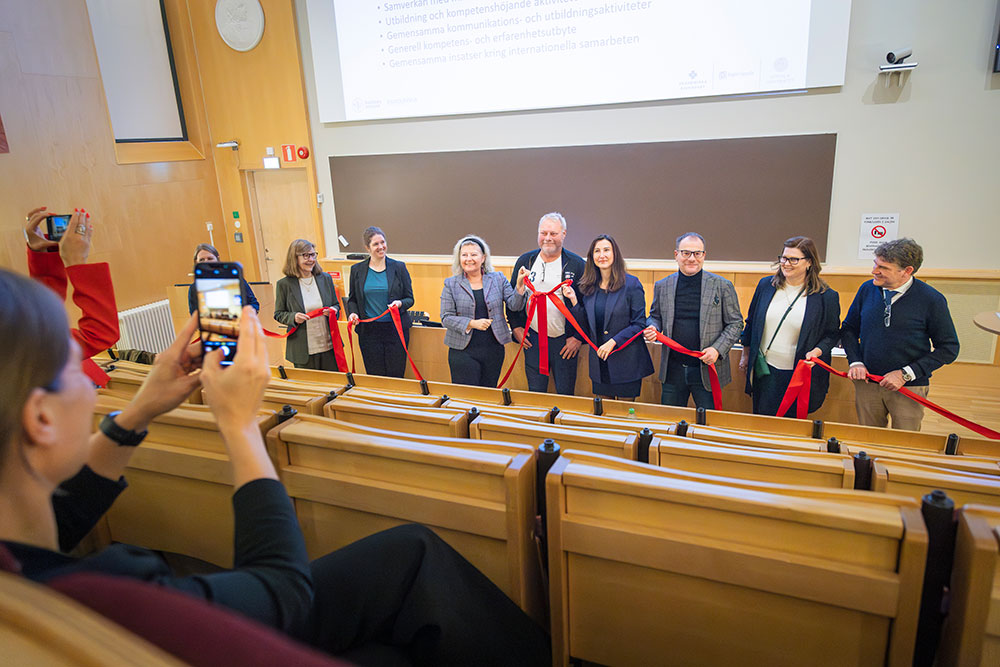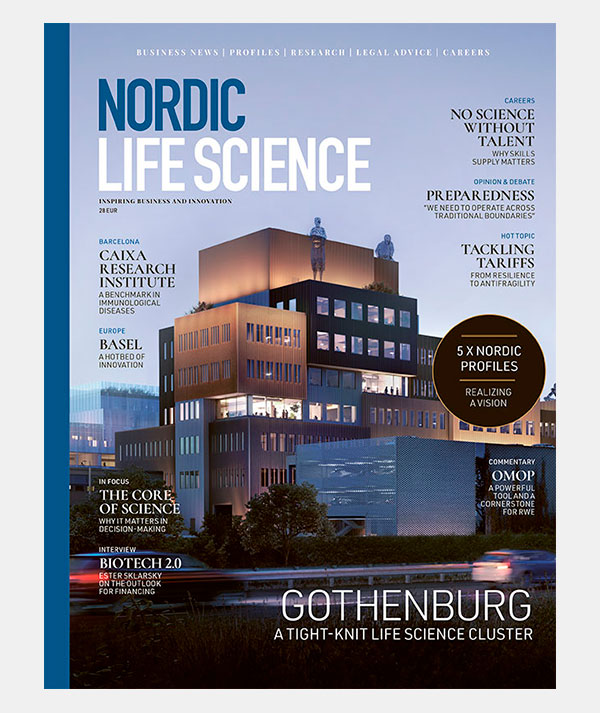What is OMOP and how can it benefit the life science industry?

What if health data was stored in the exact same format, using the exact same coding and conventions at each university hospital in the Nordics? Then a researcher could write one analysis script and run it everywhere. Results can be compared or combined instantly, without moving sensitive data. Studies that once were impossible or took months to complete could be done in weeks, all while preserving privacy.
It sounds like science fiction, but it’s real today thanks to the OMOP Common Data Model and the open-source tools from the global OHDSI community.
Understanding the OMOP Common Data Model
The Observational Medical Outcomes Partnership (OMOP) Common Data Model (CDM) is a cornerstone for real-world evidence (RWE) generation in healthcare analytics. Developed and maintained by the OHDSI (Observational Health Data Sciences and Informatics) collaborative, OMOP standardizes and integrates diverse observational healthcare datasets into a unified analytical framework. This transformation of heterogeneous data sources enables novel research opportunities in our rapidly evolving healthcare landscape.
The OMOP CDM is designed to address the challenges posed by disparate healthcare data sources. Healthcare data can vary greatly in terms of structure, format, and terminologies used, making it difficult to conduct comprehensive and comparative analyses. The OMOP CDM standardizes the structure and content of observational data, enabling researchers to perform systematic analyses using a common framework across institutions globally.
Key Components of the OMOP CDM
The OMOP CDM is organized as a relational database structure, comprising tables that represent various aspects of patient information, clinical events, and healthcare observations. These tables are linked to each other, allowing researchers to query and analyze data across multiple dimensions [1]. The standardized vocabularies used in the OMOP CDM act as a universal translator, converting diverse medical coding systems into a common language [2]. This means that whether a heart attack is coded in ICD-10, SNOMED, or any other system, it becomes the same standardized concept in OMOP, ensuring that data from different sources can be integrated and analyzed effectively [3].
Benefits of Data Standardization
Data standardization through OMOP CDM provides measurable advantages for observational research. Multi-institutional studies requiring 12-18 months of data preparation using traditional methods can be completed within 8-12 weeks using the standardized model [4]. Secondly, it enhances statistical power by enabling researchers to analyze cohorts of millions rather than thousands of patients, making it possible to detect and validate findings across diverse populations. Additionally, the standardized framework reduces technical barriers for participating institutions, requiring primarily analytical rather than data engineering expertise. The LEGEND (Large-Scale Evidence Generation and Evaluation in a Network of Databases) hypertension study demonstrated these capabilities by analyzing 1.3 million patients across nine databases in twelve weeks, comparing first-line treatment effectiveness with previously unattainable granularity [5]. For Nordic research networks, standardization facilitates cross-border validation studies while maintaining compliance with data protection regulations, particularly valuable for rare disease research where individual country cohorts may be insufficient for meaningful analysis.
Benefits of OMOP in the life science industry
- Standardizes healthcare data.
- Streamlines research and analysis across diverse databases.
- Utilizes a CDM for data conversion.
- Enables easy comparison of results across data sources.
- Fosters interoperability and teamwork among researchers.
- Enhances the quality of evidence produced in healthcare studies.
Facilitating Observational Research
The OMOP CDM enables research teams to answer complex questions that were previously impractical. When COVID-19 emerged, researchers using OMOP characterized the disease across 850 million patient records within weeks – providing critical insights about risk factors and outcomes that informed early treatment guidelines. This rapid response was possible because standardized data allowed researchers to share and validate analytical code, not sensitive patient data. The same infrastructure now supports ongoing safety surveillance of new medications, comparative effectiveness studies between treatment options, and identification of optimal treatment sequences for complex conditions [3]. Perhaps most importantly, OMOP makes research reproducible – when a Finnish team publishes findings, Norwegian researchers can immediately test the same hypotheses on their population, strengthening evidence through replication. This collaborative approach is particularly valuable in the Nordics, where individual country populations may be too small for conclusive studies on rare diseases or novel treatments.
OMOP applied in practice
A concrete example of OMOP’s application is seen in the Value from Nordic health data (VALO) project, which aims to demonstrate the added value of Nordic collaboration in the secondary use of health data. In this project, a federated analysis is conducted using data converted to the OMOP Common Data Model at each participating site without sharing patient information. By focusing on patients with metastatic non-small cell lung cancer (NSCLC) and comparing care quality across hospitals in Denmark, Finland, and Norway, the study aims to improve data sharing and use in the Nordics.
Supporting Regulatory Submissions
Regulatory agencies increasingly accept OMOP-based evidence for critical decisions. What makes OMOP particularly valuable for regulatory purposes is its built-in audit trail – every data transformation is documented, every analytical decision is transparent, and results can be independently verified by regulators. The DARWIN EU® (Data Analysis and Real World Interrogation Network) initiative, launched by EMA, specifically uses OMOP CDM to conduct regulatory-requested studies across European databases.
Driving Innovation in Healthcare
The insights gained from observational data can drive innovation in healthcare by identifying unmet needs, optimizing treatment pathways, and improving patient outcomes. The OMOP CDM enables researchers to analyze diverse data sources, provide a comprehensive view of patient populations, and empower researchers to uncover new patterns and trends. These insights are already informing the development of innovative interventions and personalized treatment strategies, ultimately enhancing the quality of care.
Conclusion
The OMOP Common Data Model is a powerful tool for leveraging observational data in healthcare research. OMOP transforms fragmented health information into a unified research ecosystem, facilitates cross-institutional collaboration, supports regulatory submissions, and drives innovation.
As we advance toward an era of AI-driven healthcare and precision medicine, the question is not whether to adopt common data standards, but how quickly we can implement them. Healthcare organizations that embrace OMOP today position themselves as leaders in tomorrow’s evidence ecosystem – contributing to global knowledge while maintaining local control. For institutions committed to advancing medical knowledge through real-world evidence, OMOP offers not just a technical solution, but membership in a global research community working toward better health outcomes for all.
Challenges with leveraging healthcare data for research
- Fragmented Infrastructure and Governance: Healthcare data remains siloed within individual institutions and national boundaries. Each hospital system operates independently with its own data governance, making multi-site research require separate agreements, approvals, and technical integrations for every participating site – a process that can take years and millions in funding before any research begins.
- Data Privacy and Security: Ensuring data privacy and security is a critical concern when conducting multi-site research. Different countries have different regulations regarding data privacy, such as GDPR in Europe and HIPAA in the US. Traditional research approaches that require pooling patient-level data face significant regulatory hurdles, often preventing valuable research from occurring. Additionally, maintaining research fidelity while ensuring privacy compliance traditionally requires extensive legal agreements and technical infrastructure that many institutions cannot support.
- Diverse Medical Terminologies and Data Models: Healthcare institutions can use fundamentally different systems to record medical concepts – a heart attack might be coded as ICD-10, SNOMED CT, or proprietary codes across different health systems. Beyond coding variations, data models themselves differ in how and when diagnoses are recorded. This semantic heterogeneity can require researchers to understand and map thousands of medical concepts for each study, a process that is error-prone and often impossible to validate. Without standardization, researchers cannot confirm they are comparing equivalent patient populations or outcomes.
OMOP can address these challenges enabling opportunities for scaling real-world research globally
- Improved Data Quality and Consistency: By standardizing healthcare data, OMOP can improve the quality and consistency of data across different regions. This standardization can lead to more reliable and actionable insights, ultimately improving patient outcomes.
- Enhanced Collaboration: OMOP’s common data model supports collaboration among global research institutions. By providing a standardized framework, OMOP can facilitate collaboration, leading to more comprehensive and impactful research.
- Scalability and Interoperability: OMOP’s scalability and interoperability make it well-suited for global adoption. Its ability to enable integration of diverse datasets and support large-scale studies can help address global health challenges and drive advancements in healthcare.
- Regulatory Support: OMOP’s role in evidence generation for regulatory submissions and assessments can support its global adoption. By providing robust and standardized data, OMOP can help meet regulatory requirements and facilitate the approval of new treatments and interventions.
- Technological Advancements: Emerging technologies, such as artificial intelligence and machine learning, can enhance OMOP’s capabilities. These technologies can help unlock new dimensions in RWE, leading to more precise predictions, accurate risk assessments, and personalized medicine.
About the Authors:


References:
1. OHDSI. Data Standardization. Available from: https://www.ohdsi.org/data-standardization/
2. OHDSI. Software Tools. Available from: https://www.ohdsi.org/software-tools/
3. National Library of Medicine. Phenotype modelling tools utilizing standardized EHR data in a Common Data Model. Available from: https://lhncbc.nlm.nih.gov/LHC-publications/PDF/pub9631.pdf
4. Hripcsak G, et al. Observational Health Data Sciences and Informatics (OHDSI): Opportunities for Observational Researchers. Stud Health Technol Inform. 2015;216:574-8. PMID: 26262116
5. Suchard MA, et al. Comprehensive comparative effectiveness and safety of first-line antihypertensive drug classes: a systematic, multinational, large-scale analysis. Lancet. 2019;394(10211):1816-1826. doi: 10.1016/S0140-6736(19)32317-7
Published: October 29, 2025











